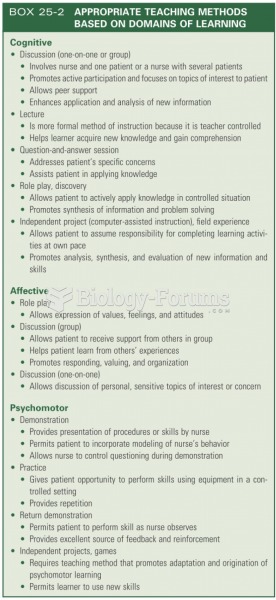Answer to Question 1
D
Feedback
A Incorrect: When teaching toilet-training methods, the nurse would not most likely recommend that the caregivers have the child go without diapers and clean up any feces or urine on the floor themselves.
B Incorrect: When teaching toilet-training methods, the nurse would not most likely recommend that the caregivers use time-out and withdrawal of privileges for not using the toilet.
C Incorrect: When teaching toilet-training methods, the nurse would not most likely recommend that the caregivers remind the child as frequently as every 15 minutes about the availability of the toilet.
D Correct: When teaching toilet-training methods, the nurse would most likely recommend that the caregivers use a calm, relaxed approach, praise for success, and no punishment at all.
Answer to Question 2
C
Feedback
A Incorrect: In addition to the development of sphincter muscle control, full-size bladder does not need to be complete prior to beginning bowel and bladder training in order for training to be successful.
B Incorrect: In addition to the development of sphincter muscle control, muscle development of the bladder does not need to be complete prior to beginning bowel and bladder training in order for training to be successful.
C Correct: In addition to the development of sphincter muscle control, myelinization of the spinal cord needs to be complete prior to beginning bowel and bladder training in order for training to be successful.
D Incorrect: In addition to the development of sphincter muscle control, full development of the abdominal muscles does not need to be complete prior to beginning bowel and bladder training in order for training to be successful.







